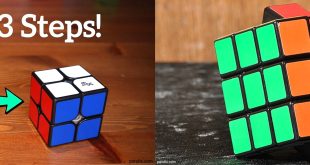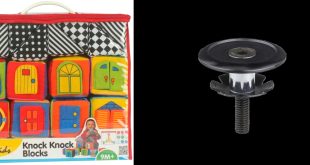Why Choose a Stickerless Rubik’s Cube?
When you think of a Rubik’s Cube, you probably imagine the classic, stickered cube with its colorful squares. But in the past decade, a new favorite has emerged among puzzlers: the stickerless Rubik’s Cube. Sleek, durable, and designed for modern solving techniques, stickerless cubes are not just a trend—they’re a revolution in cubing. Let’s explore why you might want to make the switch.
Stickerless Rubik’s Cube vs Stickered Cube
First, let’s break down the difference. A traditional Rubik’s Cube has plastic stickers on each face, representing colors. A stickerless cube, however, is molded from colored plastic—each piece is a solid color, eliminating the need for stickers.
- Durability: Stickers can peel, fade, or warp over time, especially with heavy use. Stickerless cubes maintain their colors indefinitely.
- Maintenance: You never have to worry about replacing stickers or fixing peeling corners.
- Weight & Feel: Stickerless cubes tend to have slightly different weight distribution, often making turns smoother.
- Aesthetic: Bright, vibrant colors with a glossy or matte finish that doesn’t wear off.
From personal experience, my first stickerless cube lasted years without any color fading or peeling, even after countless speed-solving sessions. It felt smoother, faster, and more resilient than any stickered cube I owned.
Technical Advantages of Stickerless Cubes
Stickerless cubes aren’t just about aesthetics—they also enhance performance. Modern stickerless cubes are designed with:
- Enhanced corner-cutting: Many stickerless cubes allow for smooth corner turns up to 45–60 degrees without locking up, essential for speedcubing.
- Improved tensioning systems: Adjustable screws and springs allow for personalized feel and tension, crucial for competitive solvers.
- Smoother lubricants: Stickerless cubes usually have plastic that interacts better with lubricants, reducing friction and improving longevity.
- Anti-pop design: Fewer pops or lockups, especially under rapid or aggressive turning, which is common during competitions.
From my experience competing in local cubing tournaments, stickerless cubes gave me an edge. Not having to worry about peeling stickers mid-solve meant fewer distractions, and the smoother turns translated directly into faster times.
Frequently Asked Questions (FAQ)
1. Are stickerless cubes easier to solve?
Not necessarily easier in terms of logic, but they are more forgiving in practice. Smooth turning, reduced pops, and vibrant colors make tracking pieces simpler for beginners and pros alike.
2. Can a stickerless cube fade?
High-quality stickerless cubes rarely fade. Unlike stickers that can peel under sunlight or heavy use, molded colors stay intact for years. Cheap models may discolor slightly, but it’s still less of an issue than stickers peeling.
3. Are stickerless cubes only for speedcubers?
Nope! Beginners benefit as well. The cube’s durability and smooth turning make practice sessions less frustrating. Plus, vibrant colors help with pattern recognition and learning algorithms.
4. Do stickerless cubes feel different?
Yes. Many find them smoother and slightly lighter than stickered cubes. This difference comes from the molded plastic, which also interacts better with lubricants and tensioning adjustments.
5. Are stickerless cubes more expensive?
Prices are comparable, though high-end stickerless speedcubes may cost more due to enhanced mechanisms. Still, you’re paying for longevity and performance.
6. Can you customize stickerless cubes?
Absolutely. While you can’t change the molded colors, you can still adjust tension, add lubricants, and modify magnets if your cube supports it. Many cubers use stickerless cubes as a base for personal modifications.
Practical Tips for Stickerless Cubes
- Lubrication: Use silicone-based lubes for smooth, fast turns. Avoid oils that might degrade the plastic.
- Tension Adjustment: Experiment with springs and screws to find a balance between stability and speed.
- Cleaning: Stickerless cubes are easier to clean. A quick rinse in lukewarm water (avoid harsh detergents) can remove dirt and dust without harming the cube.
- Practice Tip: Spend time learning algorithms with a stickerless cube—the bright colors make edge and corner recognition faster.
- Storage Tip: Keep it out of direct sunlight for extended periods to maintain color vibrancy.
Examples and Personal Stories

I remember my first stickerless cube: a bright, neon-molded 3×3. After months of daily practice, including long commute train rides and beach sessions, the colors were still vivid, the cube still glided effortlessly, and my solving times improved steadily. In contrast, my stickered cubes were already peeling in the same timeframe. That’s when I made the switch completely.
Another friend, a competitive speedcuber, swears by stickerless 4×4 and 5×5 cubes. According to him, stickerless designs reduce misalignments during fast rotations, which is crucial when solving under 40 seconds.
Stickerless Cubes and Sustainability
Here’s an angle many overlook: longevity equals sustainability. Stickerless cubes last longer than stickered ones, reducing plastic waste from replaced or worn-out stickers. Investing in a durable cube means fewer resources are consumed over time. Coupled with eco-conscious manufacturing from some brands, stickerless cubes fit a more sustainable hobby model.
Future Trends and Innovations
Stickerless cubes are evolving fast. Expect:
- Enhanced magnetic systems for better stability at high speed
- Advanced low-friction plastics that reduce wear and improve tactile feel
- Customizable modular designs for personal preference in tension and magnet placement
- Integration with digital cube apps for tracking solving patterns and times
The Rubik’s Cube may be over 40 years old, but stickerless cubes prove the puzzle is just as innovative and forward-thinking today.
Pros and Cons of Stickerless Rubik’s Cubes
Pros:
- Durable and long-lasting colors
- Reduced maintenance and worry about peeling stickers
- Smoother turning and better corner-cutting
- Ideal for beginners and speedcubers
- Environmentally friendly in the long term
Cons:
- Cannot change colors or stickers
- Some models may feel slightly slippery without tension adjustment
- High-end stickerless cubes can be expensive
Final Verdict: Should You Switch?
If you’re serious about cubing or just want a hassle-free, vibrant, and durable cube, the answer is yes. Stickerless Rubik’s Cubes combine aesthetics, performance, and longevity. Whether you’re learning algorithms for the first time or chasing personal speed records, a stickerless cube enhances your experience while reducing long-term maintenance headaches.
In short, stickerless cubes aren’t just a passing trend—they’re the modern standard for both casual solvers and competitive speedcubers alike. Bright, durable, and high-performing, they make every twist and turn a pleasure.
Key Takeaways
- Stickerless cubes are more durable than stickered cubes, making them ideal for long-term use.
- Smoother turns, better corner-cutting, and lower maintenance improve both casual and competitive solving.
- Vibrant, molded colors eliminate peeling and fading issues.
- Long-lasting performance and fewer replacements contribute to sustainability.
- Adjustable tension, lubrication, and magnetic mods allow customization for serious cubers.
Switching to a stickerless cube isn’t just practical—it’s a step toward a better, smoother, and more sustainable cubing experience.
 Electric Bike & Bicycle Repair Hub Master DIY electric and traditional bike repairs with practical tips and trusted product recommendations.
Electric Bike & Bicycle Repair Hub Master DIY electric and traditional bike repairs with practical tips and trusted product recommendations.



